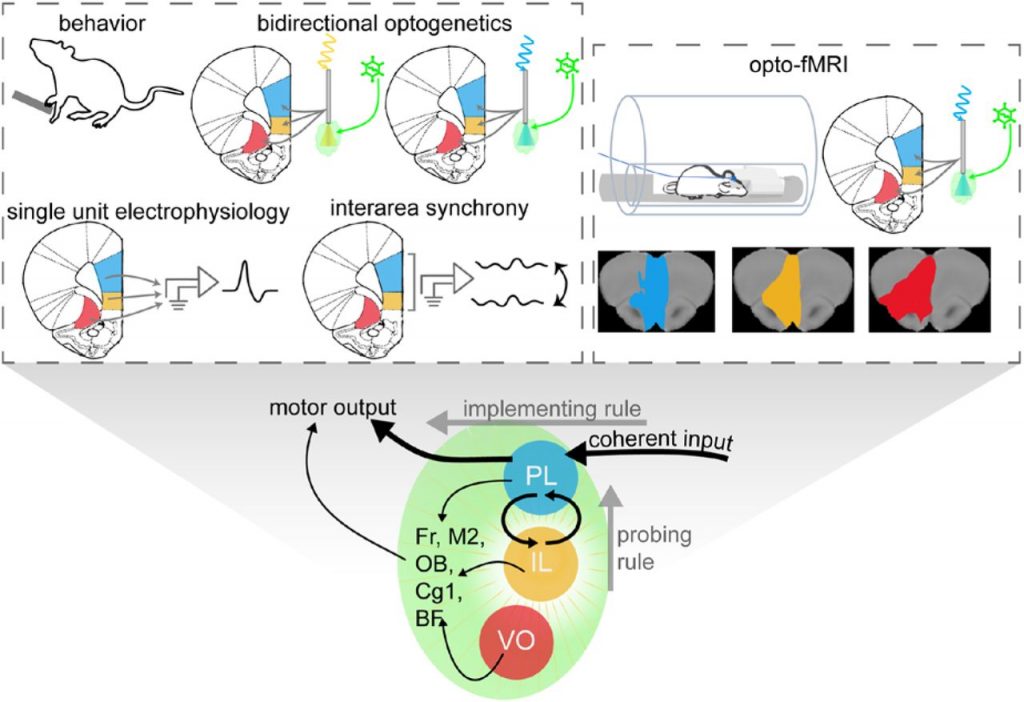
Abstract
Goal-directed action control and behavioral flexibility are prerequisites for effective, adaptive behavior. Both abilities rely on functional motor inhibition, which is linked to the prefrontal cortex (PFC), where distinct subsections collaborate in functional networks. How these PFC subsections interact and which roles they play during motor inhibition remains incompletely understood. In this study, we employed an action-preparation task in rats, combined with bidirectional optogenetic interventions, opto-fMRI, single unit electrophysiology and local field potential synchrony measurements across PFC subsections. Our findings support a clear and simple model of action inhibition within the prefrontal network. This model suggests prelimbic cortex (PL) as an input-dependent switch between motor inhibition and execution, modulated by an infralimbic cortex (IL)-dominated network. This distribution of tasks allows the PL to mediate goal-directed action while the IL ensures behavioral flexibility.
